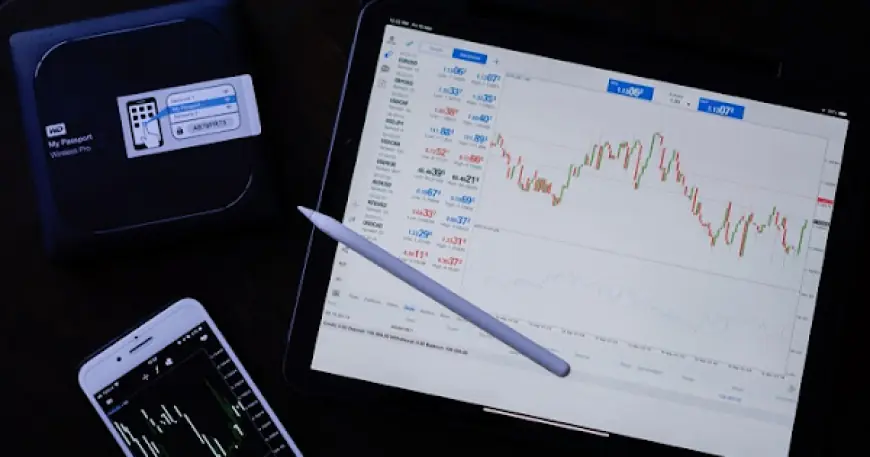Trading with Indices: Long-Term Trading Strategies
Scouting for great long-term strategies when trading indices? If so, keep read to know 5 awesome ones down below and how to apply them.

If you’re looking to trade but don’t want to be glued to your screen all day, trading indices with a long-term strategy might be the perfect fit for you. Unlike day trading, which requires quick decision-making, long-term index trading allows you to take a more relaxed approach while still making solid gains over time. Let’s break down how you can make the most of long-term index trading and how it ties into forex trading online.
Why Trade Indices?
Indices, such as the S&P 500, Dow Jones, FTSE 100, and NASDAQ, represent a group of stocks that provide a broader look at market performance. Instead of trading individual stocks, trading indices gives you exposure to an entire sector or economy. This diversification reduces risk since you’re not relying on the success of a single company.
Indices are also less volatile than individual stocks, making them ideal for long-term strategies. Over time, most major indices tend to trend upward, driven by economic growth and inflation.
Long-Term Strategies for Trading Indices
If you’re in it for the long haul, these strategies can help you trade indices effectively:
1. Buy and Hold Strategy
The simplest and most common long-term trading strategy is to buy an index and hold it for years. Historically, indices like the S&P 500 have delivered steady returns over time, despite short-term fluctuations. This strategy is perfect if you believe in the long-term growth of the economy and want to minimize trading stress.
How to Apply It:
-
Choose a well-established index like the S&P 500 or NASDAQ-100.
-
Invest consistently, even when the market dips.
-
Hold your position for several years and let compound interest do its magic.
2. Trend Following Strategy
This strategy involves analyzing market trends and only trading when an index is in an uptrend. Traders use moving averages (such as the 50-day or 200-day moving average) to determine if an index is in a bullish phase.
How to Apply It:
-
Identify an upward trend using moving averages or trend lines.
-
Enter the trade when the price stays above the 200-day moving average.
-
Hold the position as long as the trend remains intact.
3. Dollar-cost averaging (DCA)
DCA is a strategy where you invest a fixed amount in an index at regular intervals, regardless of the price. This strategy minimizes the effects of market fluctuations.
How to Apply It:
-
Invest a fixed amount in an index fund every month.
-
Stick to the plan even during market downturns.
-
Over time, your average cost per share will balance out, reducing risk.
4. Sector Rotation Strategy
Markets go through cycles where certain sectors perform better than others. For example, during economic booms, tech stocks might surge, while defensive sectors like utilities do well in downturns. The sector rotation strategy involves adjusting your index positions based on these cycles.
How to Apply It:
-
Identify which sectors are expected to perform well in the current economic phase.
-
Invest in indices that represent those sectors (e.g., NASDAQ for tech, Dow Jones for industrials).
-
Rotate your investments as market conditions change.
5. Hedging with Options
For traders looking to protect their positions, options can be a great tool. Buying put options on an index can act as insurance against market downturns while selling covered calls can generate extra income.
How to Apply It:
-
Buy put options when you expect a short-term dip but want to hold your position long-term.
-
Sell covered calls to generate passive income while holding an index.
Combining Index Trading with Forex Trading Online
If you’re already involved in forex trading online, trading indices can be a great complement to your strategy. While forex markets react quickly to news and economic events, indices provide a broader, slower-moving picture of the market. You can use Forex insights to inform your index trades. For example, if the USD strengthens significantly, it may impact U.S. major stock indices such as the Dow Jones and S&P 500.
By combining forex trading and index trading, you can diversify your investments and hedge against risks in different markets.
Final Thoughts
Trading indices with a long-term strategy is an excellent way to build wealth without the stress of day trading. Whether you choose a simple buy-and-hold approach or a more active trend-following strategy, indices offer a stable way to grow your portfolio. Plus, if you’re already into forex trading online, adding index trading to your skillset can give you even more opportunities to profit from market movements.












